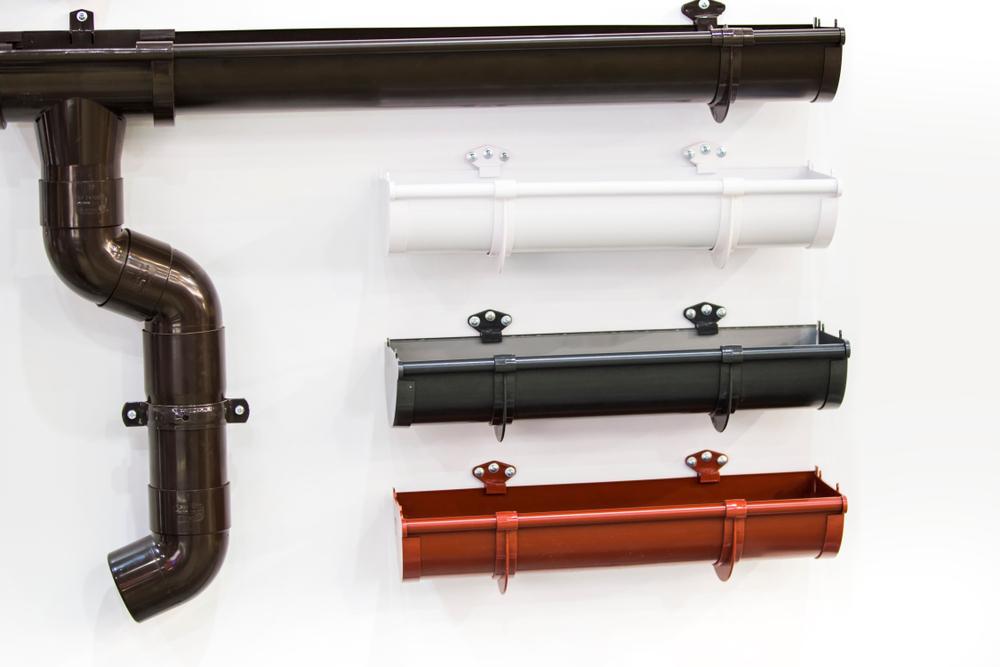Although the condition of your gutters can often be overlooked, gutters play a crucial role in keeping your building structurally sound and preventing costly water damage. Properly sized and installed gutters channel rainwater and snowmelt away from your home’s foundation, siding, and landscaping, ensuring that excess water doesn’t lead to problems such as basement flooding, mold growth, or rotting wooden structures.
In this comprehensive guide, we’ll deep-dive into how gutter sizes and capacities are calculated, what factors influence their selection, and the type of systems that can keep your home dry and your heart at ease, even in the heaviest of downpours.
Understanding Gutter Sizes: More Than a Mere Measurement
When it comes to gutters, “size” refers to more than just length; it’s indicative of how much water a gutter can carry. This is a crucial consideration, as using gutters that are too small for your home’s needs might result in overflows and potential water damage. The primary sizing variables include width, depth, and the slope of the system, all of which contribute to the gutter’s overall capacity.
Width and Depth: The Building Blocks of Capacity
Wider and deeper gutters have larger capacities and can handle more water volume. For residences, common widths range from four to six inches, and depths can vary from five to seven inches. Larger structures may require even more substantial dimensions.
System Slope: A Lesser-Known Sizing Factor
The slope of your gutter system has a significant impact on performance. It’s this slope that ensures water flows toward the downspouts rather than stagnating in pockets. A steeper incline means faster drainage, so the system is better prepared for high water volumes.
Calculating Gutter Capacity: Science Meets Practicality
To calculate the required capacity of your gutter system, you’ll need to consider your home’s roof size, pitch, and local precipitation data. The formula is straightforward but essential for accuracy:
`Capacity = Roof Size (in square feet) x Rainfall Intensity Factor`
The ‘Rainfall Intensity Factor’ is a local statistic provided by the National Weather Service that accounts for how rapidly rain falls in your area. Generally, you want your system to accommodate the most intense rainstorm typical for your region without overflowing.
Beyond Size: Gutter Materials and Durability
Selecting the right material for your gutters is just as important as choosing the correct size. Each material offers a different set of benefits in terms of durability, corrosion resistance, cost, and maintenance requirements.
Vinyl and Aluminum: Budget-Friendly with a Variety of Colors
Vinyl and aluminum are popular choices for residential gutters due to their affordability, lightweight nature, and the array of colors available. These materials are relatively low maintenance and offer good corrosion resistance, making them ideal for most climates.
Steel and Copper: The High-End Options
Steel and copper gutters are more expensive but provide a high-end, durable option that is not only functional but also adds a sophisticated look to your home. They can last for decades with proper maintenance and offer excellent resistance to the elements.
Downspouts: The Unsung Heroes of the Gutter World
A well-designed gutter system is not complete without the proper complement of downspouts. Downspout size and quantity are equally essential to ensure that all the water your gutters collect is efficiently discharged.
Sizing It Up: Math Gets Involved
Downspout size should match or exceed the capacity of the gutters they are attached to. For instance, a standard two-inch by three-inch downspout can typically handle the output of a 600-square-feet roof area.
Placing for Efficiency: Less Is More, Until It’s Not
Additional downspouts can be added for larger roof areas, especially if there are complex roof shapes or deeply cut valleys that can lead to concentrated water flow. Proper placement ensures a more balanced system and can prevent overflows.
The Importance of Proper Gutter Sizing
Your home’s gutters are its first line of defense against the damaging effects of water. They protect your foundation, siding, and landscaping while also ensuring that water doesn’t pool or leak into your home. By understanding gutter sizes and capacities, you can ensure that your gutter system is adequately equipped to handle the heaviest of downpours, keeping your home safe and dry for years to come.


